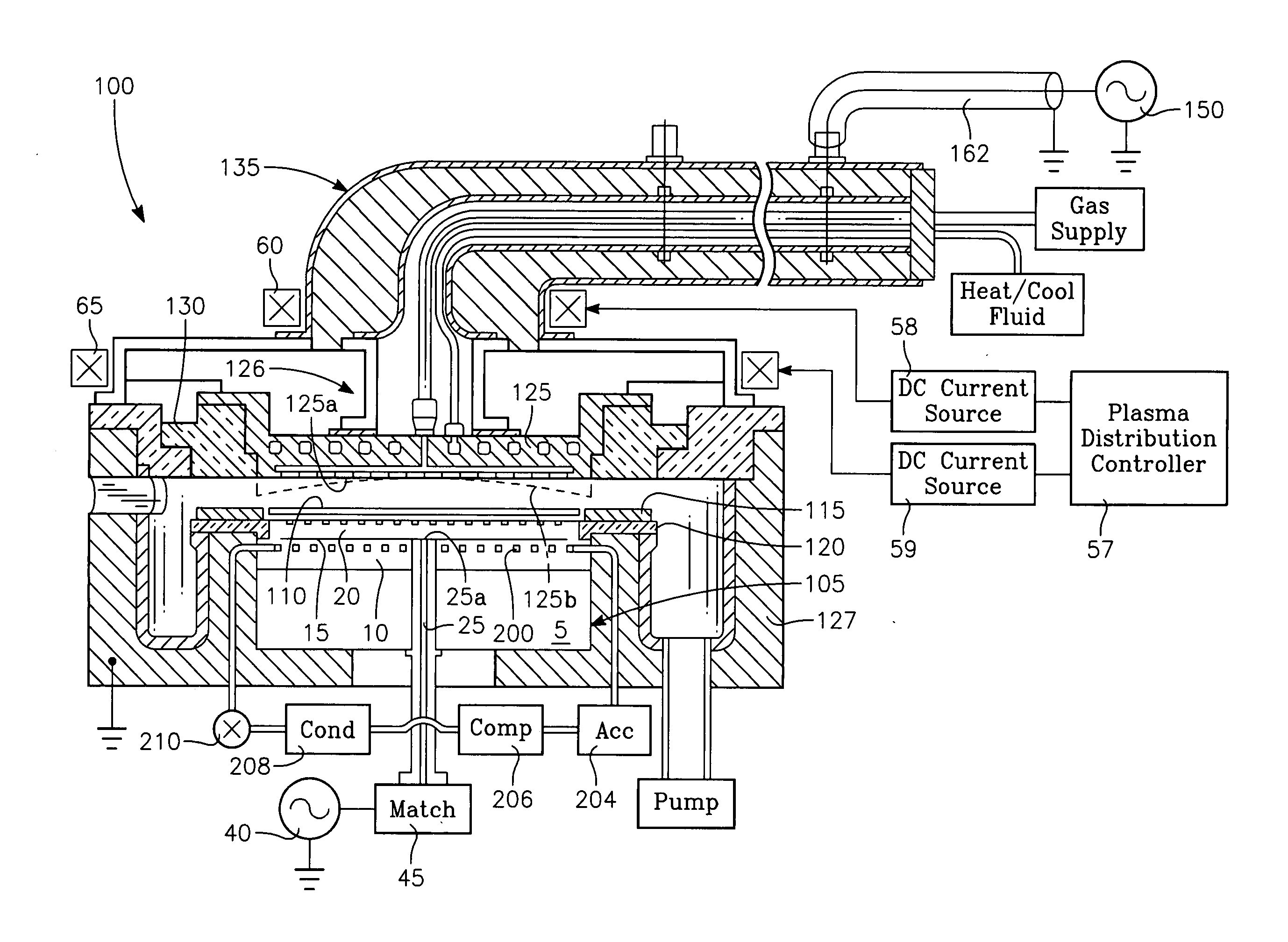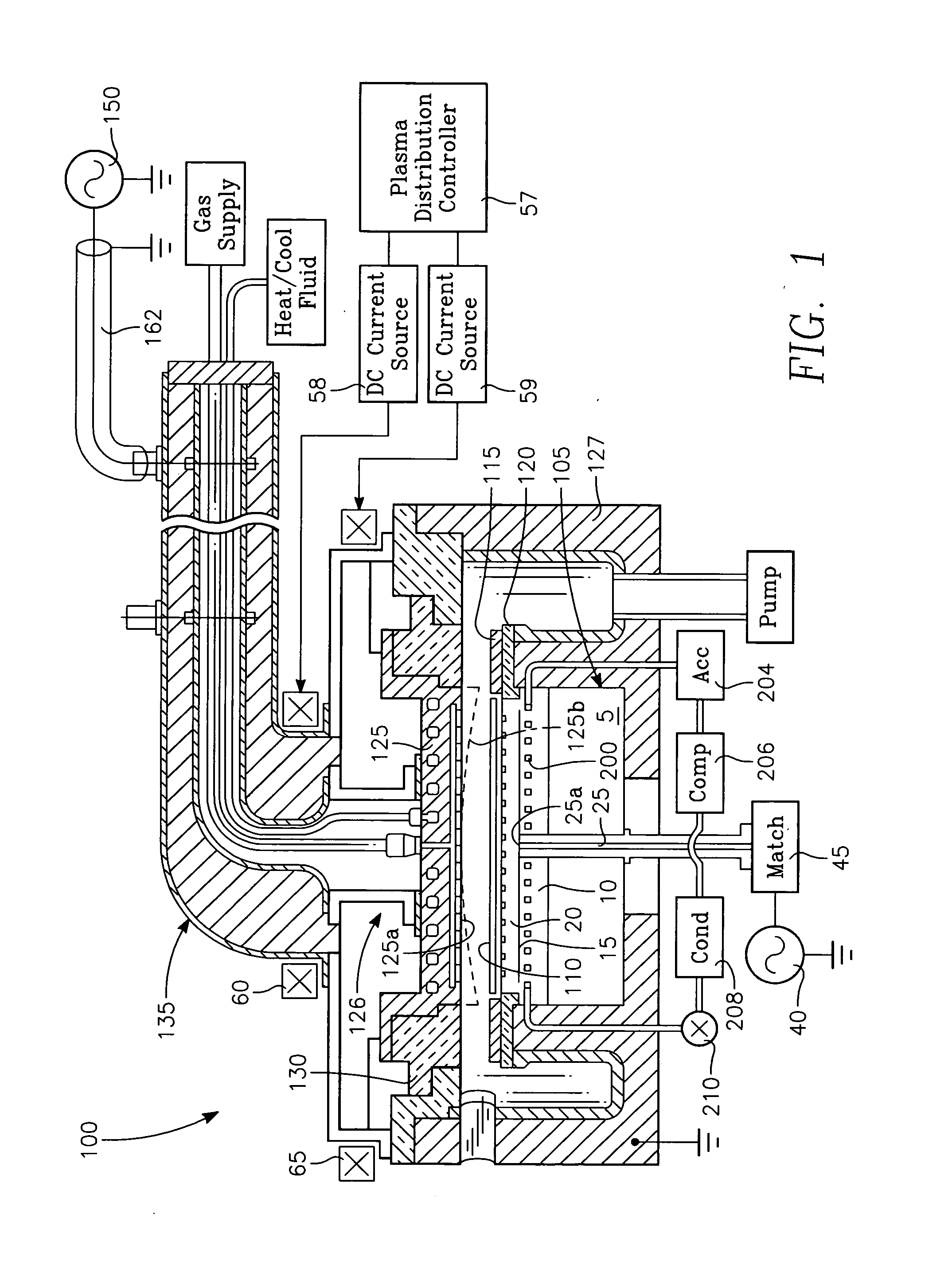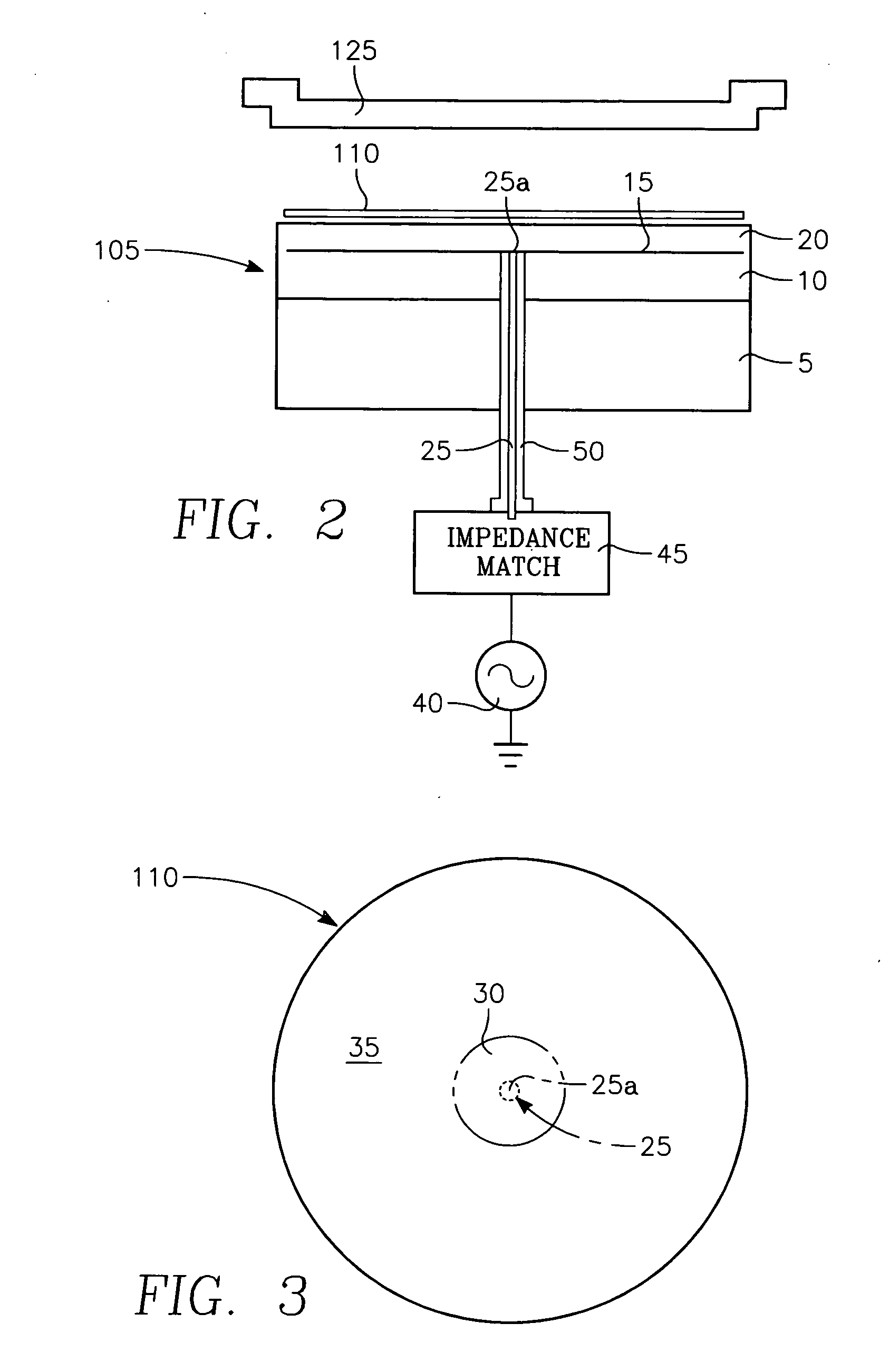Plasma reactor with wafer backside thermal loop, two-phase internal pedestal thermal loop and a control processor governing both loops
a plasma reactor and thermal loop technology, applied in the direction of refrigeration safety arrangement, refrigeration components, light and heating equipment, etc., can solve the problems of degrading the now highly uniform etch rate distribution of the reactor, defeating the purpose, and uncontrollable wafer temperature ris
- Summary
- Abstract
- Description
- Claims
- Application Information
AI Technical Summary
Benefits of technology
Problems solved by technology
Method used
Image
Examples
working example
[0068] While the variable orifice size of the expansion valve 210 is the primary control over cooling rate and wafer temperature, additional or alternative temperature control and, if desired, heating of the wafer, is provided by a compressor-to-evaporator bypass valve 212. Complete conversion of all liquid coolant to the gas phase in the accumulator 204 can be ensured using a compressor-to-accumulator bypass valve 214.
[0069] While selection is readily made of a suitable coolant, a flow rate by the compressor 206 and an orifice size of the expansion valve that satisfies the foregoing conditions, the following is provided as a working example in which two-phase cooling is achieved: [0070] ESC Inlet temperature: −10 to +50 deg C. [0071] ESC Inlet pressure: 160 to 200 PSIG [0072] ESC Inlet liquid-vapor ratio: 40%-60% liquid [0073] ESC Inlet-Outlet max temperature difference: 5 deg C. [0074] ESC Inlet-Outlet max pressure difference: 10 PSI [0075] ESC Outlet Liquid-vapor ratio: 10% liqu...
PUM
| Property | Measurement | Unit |
|---|---|---|
| Temperature | aaaaa | aaaaa |
| Diameter | aaaaa | aaaaa |
| Length | aaaaa | aaaaa |
Abstract
Description
Claims
Application Information
 Login to View More
Login to View More - R&D
- Intellectual Property
- Life Sciences
- Materials
- Tech Scout
- Unparalleled Data Quality
- Higher Quality Content
- 60% Fewer Hallucinations
Browse by: Latest US Patents, China's latest patents, Technical Efficacy Thesaurus, Application Domain, Technology Topic, Popular Technical Reports.
© 2025 PatSnap. All rights reserved.Legal|Privacy policy|Modern Slavery Act Transparency Statement|Sitemap|About US| Contact US: help@patsnap.com



